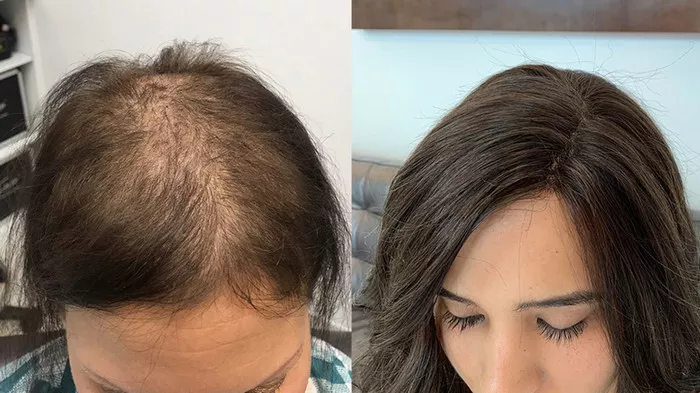Hair loss can be a challenging experience, and for those seeking a hair transplant, the question of whether they need to shave their head can be a significant concern. In this comprehensive guide, we will explore the topic of head shaving in hair transplantation procedures. We will discuss the different techniques used, the advantages and disadvantages of shaving, and provide valuable insights to help you make an informed decision.
Understanding Hair Transplantation:
Before delving into the specifics of head shaving, it is important to understand the basics of hair transplantation. Hair transplantation is a surgical procedure that involves the extraction of hair follicles from a donor site and their transplantation into areas of hair loss or thinning, known as the recipient site. The extracted hair follicles are typically taken from the back or sides of the head, where hair growth is usually dense and resistant to balding.
Different Techniques in Hair Transplantation:
There are two primary techniques used in hair transplantation: Follicular Unit Transplantation (FUT) and Follicular Unit Extraction (FUE). Let’s explore each technique and its relation to head shaving requirements.
Follicular Unit Transplantation (FUT):
FUT, commonly known as the strip method, involves the removal of a strip of scalp from the donor area, which is then dissected into individual hair follicles for transplantation. This technique allows for the transplantation of a large number of grafts in a single session.
Head Shaving with FUT:
In most cases, the surgeon will advise shaving the donor area for an FUT procedure. Shaving the donor area allows for better visibility and access to the scalp, facilitating the precise removal and dissection of the strip. However, it’s important to note that only the donor area is typically shaved, while the recipient site is left untouched.
Follicular Unit Extraction (FUE):
FUE is a more advanced technique that involves the extraction of individual hair follicles directly from the donor area, rather than removing a strip of scalp. Each follicle is extracted using a small, punch-like instrument, leaving tiny puncture wounds on the scalp.
Head Shaving with FUE:
The need for head shaving in FUE procedures largely depends on the number of grafts required and the length of existing hair in the donor area. In some cases, where a smaller number of grafts are needed or if the existing hair is long enough to conceal the extraction sites, shaving may not be necessary. However, for larger FUE sessions or when the existing hair is short, shaving the donor area might be recommended for optimal extraction and visibility.
Advantages of Shaving the Head:
While the idea of shaving the head may be daunting for some individuals, there are several advantages to consider:
Improved Surgical Precision:
Shaving the head allows the surgeon to have a clear view of the scalp, making it easier to identify the natural direction of hair growth, locate the best donor follicles, and accurately perform the transplantation. It also reduces the risk of damaging existing hair during the procedure.
Efficient Graft Extraction:
Shaving the head enables more efficient and streamlined graft extraction in both FUT and FUE procedures. With better visibility, surgeons can navigate the donor area more effectively, resulting in a higher graft survival rate and better overall outcomes.
Ease of Post-Operative Care:
Shaving the head simplifies post-operative care. It makes it easier to clean the scalp, apply any necessary topical medications, and monitor the healing process. Additionally, it reduces the risk of infection or other complications by providing better access to the treated areas.
Disadvantages of Shaving the Head:
While there are advantages to shaving the head for a hair transplant, there are also potential disadvantages to consider:
Temporary Change in Appearance:
Shaving the head can be a significant change in appearance, and some individuals may feel self-conscious or uncomfortable during the regrowth phase. It’s important to mentally prepare for the temporary alteration in one’s look.
Longer Hair Regrowth:
If you choose to shave your head, it will take time for the hair to grow back to its original length. This regrowth period can vary from a few weeks to several months, depending on individual hair growth rates. Patience is key during this stage.
Inconvenience for Some Occupations:
For individuals in certain professions, such as those requiring a specific hairstyle or those in the public eye, the temporary head shaving might present challenges. It’s essential to consider any professional or personal commitments that might be impacted by the change in appearance.
Conclusion:
The decision to shave or not to shave your head for a hair transplant ultimately depends on various factors, including the technique chosen, the number of grafts required, and personal preferences. Shaving the head offers advantages in terms of surgical precision, graft extraction, and post-operative care. However, it also comes with temporary changes in appearance and a regrowth period. Discussing your concerns and preferences with a qualified hair transplant surgeon will help you make an informed decision that aligns with your specific needs and expectations. Remember, the ultimate goal is to achieve natural-looking, long-lasting results in your hair restoration journey.
Related topics:
- How expensive is a hair transplant: A Quick Guide
- Best Hat After Hair Transplant: Protecting Your Scalp
- Does hair transplant really work: What You Need To Know


